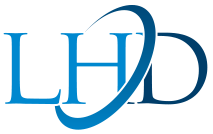Final Rules on Coverage Transparency, Public Disclosure of Negotiated Rates
On October 29, 2020, the Internal Revenue Service (IRS), Department of Labor (DOL), and the Department of Health and Human Services (HHS) (collectively, the Departments), released final rules on coverage transparency, in order to provide health coverage recipients with an estimate of their potential cost-sharing liability for health-related services prior to the receipt of care. The final rules require group health plans and insurance issuers in the individual and group markets to disclose cost-sharing information and negotiated rates in electronic or paper form. See our Part 1 Advisor on the Coverage Transparency rules regarding disclosures to participants, beneficiaries, and enrollees and our Part 2 for a more comprehensive Advisor on the Public Disclosure Requirements.
The final rules require group health plans and insurance issuers to disclose negotiated rates and historical allowed amounts to the public through machine-readable files. Insured plans may satisfy the disclosure obligation by contracting with the issuer to provide the information required under the final rules, with such delegation of responsibility absolving the plan from liability for the issuer’s noncompliance with the final rules, provided the issuer is independently subject to the final rules. However, if a plan or issuer enters into an agreement with third-parties (such as a TPA or healthcare clearinghouse) to provide the public disclosures and the third party fails to provide full or timely information, the plan or issuer will have violated the final rules’ public disclosure requirements.
HHS released a fact sheet and a press release regarding the final rules.
Applicability
The following types of plans and coverage aren’t subject to the final rules: grandfathered health plans; excepted benefits; health care sharing ministries; short-term, limited-duration insurance; or other account-based health plans (FSAs, HSAs, and HRAs, including ICHRAs and QSEHRAs) that simply make certain dollar amounts available.
Effective Dates
- Public Disclosure of Negotiated Rates and Historical Allowed Amounts: January 1, 2022
- Disclosure of Cost Information: January 1, 2023, through January 1, 2024 (see Part 1 Advisor)
- Medical Loss Ratio Calculation: 2020 MLR Reporting Year (see Part 1 Advisor)
Public Disclosure of Negotiated Rates
The rule contains requirements for public disclosure of certain information on an internet website, without requiring access credentials, in three machine-readable files: 1) an in-network rate file, 2) an out-of-network allowed amount file, and 3) a prescription drug machine-readable file. Under the rule, “machine readable” is defined as a non-proprietary open format digital representation of data or information in a file that can be imported or read by a computer system for further processing without human intervention, while ensuring no semantic meaning is lost. A PDF file, for example, would not meet this definition due to its proprietary nature.
File Requirements
Each file must contain: 1) identifying information for the plan or issuer, including the name and 14-digit HIOS identifier (if one is available), the 5-digit HIOS identifier (if the 14-digit is not available), and the EIN if no HIOS identifier is available; and 2) a billing code (the code used by the plan or insurer to identify items or services for purposes of billing, such as a CPT Code, HCPCS code, DRG, or NDC) and a plain language description for each billing code for each covered item or service. Specific rules for each type of file are as follows.
- The In-Network Machine Readable File must include:
All applicable rates, which may include one or more of: negotiated rates, underlying fee schedule rates (the rate from an in-network provider to determine cost-sharing liability), or derived amounts (the price assigned to an item or service for the purpose of internal accounting, reconciliation with providers or submission of data). For items or services in a bundled payment, the applicable rate is to be a dollar amount for each covered item or service and other specified information.
- The Allowed Amount Machine Readable File must include:
- Unique out-of-network allowed amounts and billed charges with respect to covered items or services of out-of-network providers during the 90-day period that begins 180 days prior to the publication date of the file (but the plan or insurer must omit such data in relation to a particular item or service and provider if this disclosure would require the plan to insure or report out-of-network allowed amounts in connection with fewer than 20 different claims under a single plan or coverage). The unique out-of-network allowed amount must be stated as a dollar amount with respect to the covered item or service furnished by an out-of-network provider, and associated with the NPI, TIN or Plan of Service Code for each out-of-network provider.
- Historical data showing allowed amounts and billed charges (i.e., balance bills) for covered items and services, including prescription drugs, furnished by out-of-network providers for which the plan or issuer has adjudicated the claims. Plans and issuers may satisfy the public disclosure requirements for the Allowed Amount File by making available out-of-network allowed amount data that has been aggregated to include information from more than one plan or policy. However, data for each plan or coverage included in an aggregated Allowed Amount File must independently meet the minimum claims threshold for each item or service and for each plan or coverage included in the aggregated Allowed Amount File.
- The Prescription Drug Machine Readable File must include:
Negotiated rates and historical net prices (which takes into account rebates, discounts, dispensing fees, and other price concessions) connected to in-network prescription drugs paid for on a fee-for-service basis. If the prescription drugs are part of a bundled payment arrangement, they must be disclosed in the In-network File. Plans and issuers are not required to provide historical net price data in the Prescription Drug File in relation to a particular pharmacy or other prescription drug dispenser with fewer than 20 different claims for payment.
Good Faith Safe Harbor
A plan or issuer will not fail to comply with the final rules described above, if acting in good faith and with reasonable diligence, the plan or issuer makes an error or omission in a disclosure, provided that the information is corrected as soon as practicable. Plans and issuers have no liability in connection with technology failures that limit the availability of the information.





